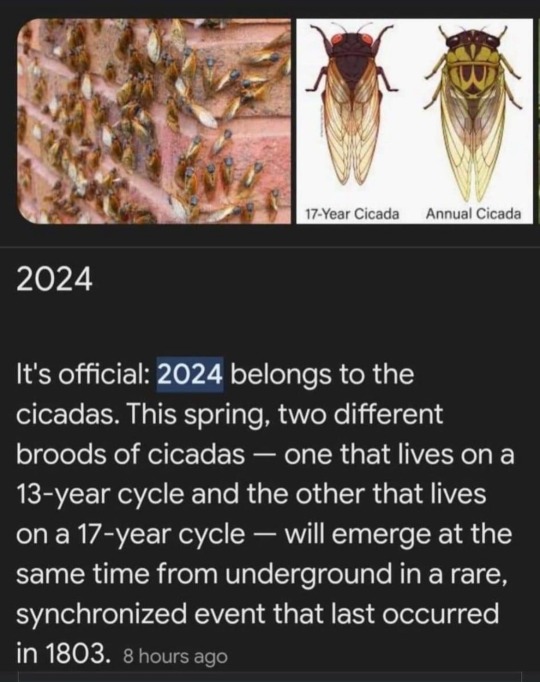Photo
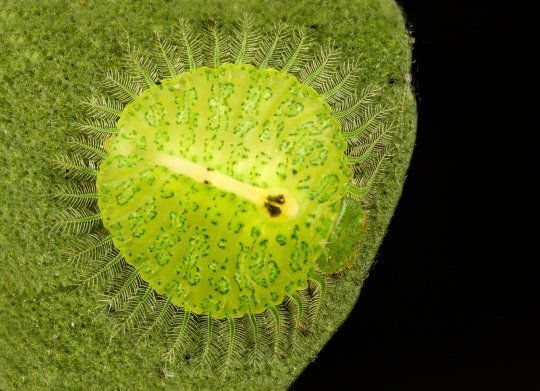
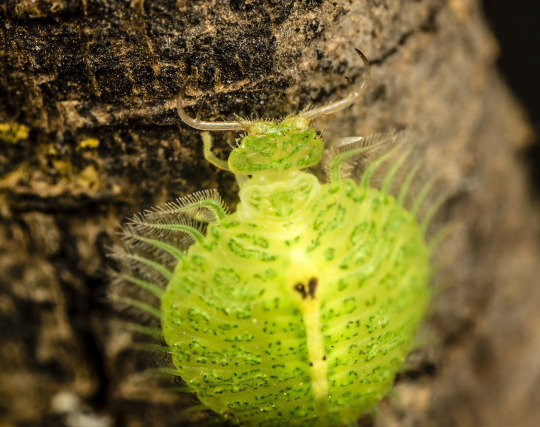
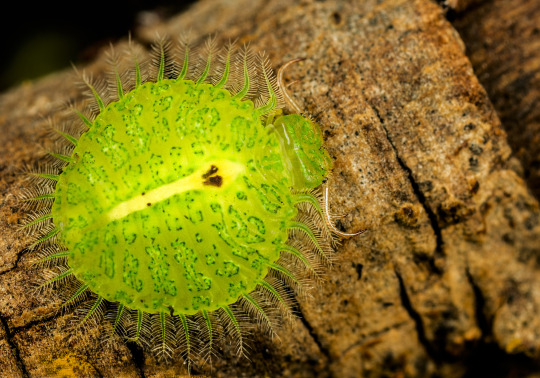
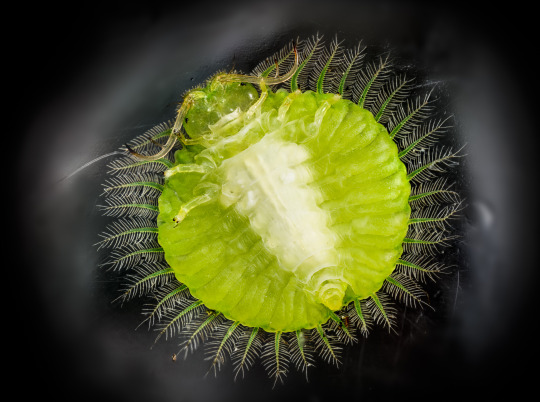
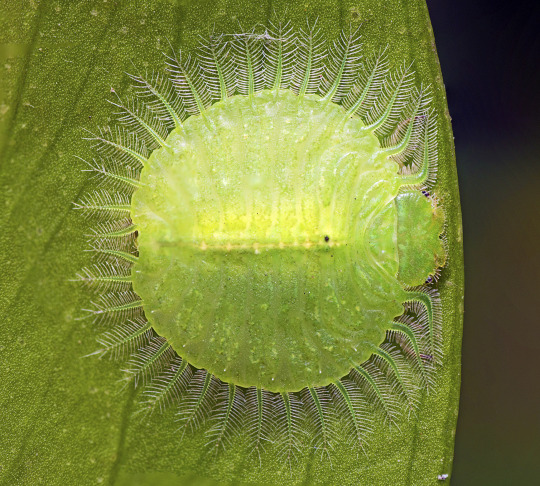
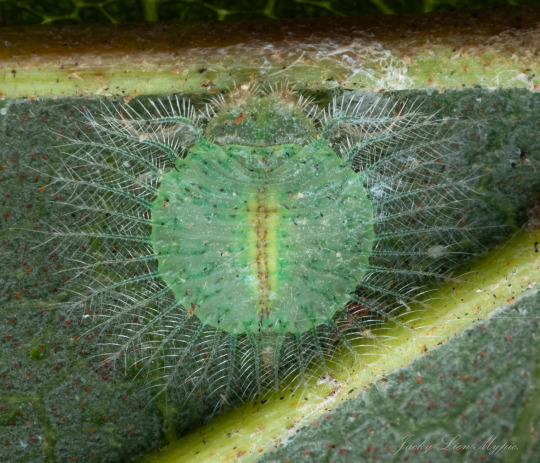
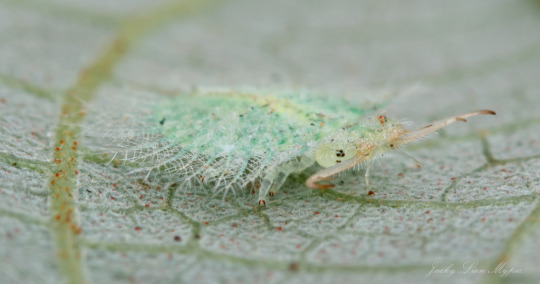

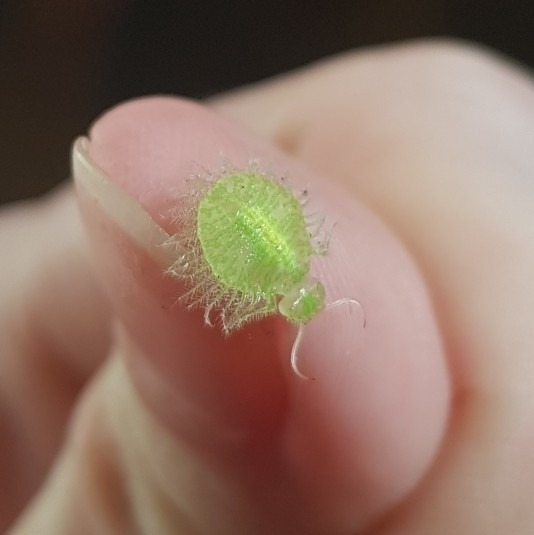

Spill-footed lacewing larvae, Myiodactylinae, Nymphidae, Neuroptera (related to owls and antlions)
Found in Australia
Adult in the same subfamily:

Photos 1-4 by normfarmerimages, 5 by tjeales, 6-8 by doggy48, 9-10 by sofiazed1, and 11 (adult) bystreglystendec
5K notes
·
View notes
Text

Rainbow Weevil (Pachyrrhynchus congestus pavonius), family Curculionidae, SE Asia
photograph by Javier Rupérez
2K notes
·
View notes
Text
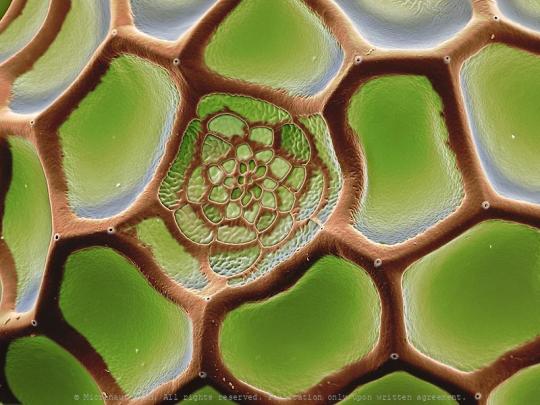

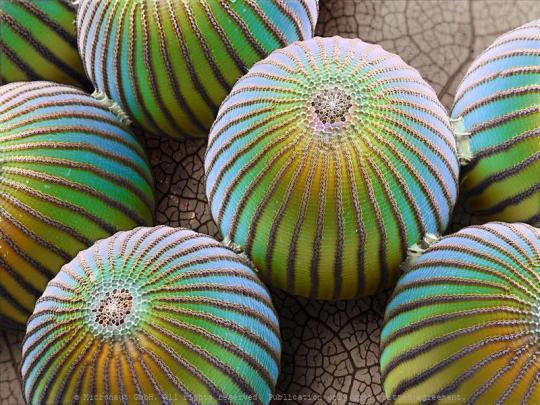
Butterfly eggs photographed by Martin Oeggerli. All rights reserved, shared with permission. See more of his butterfly egg photos here!
2K notes
·
View notes
Text
February 21st, 2024

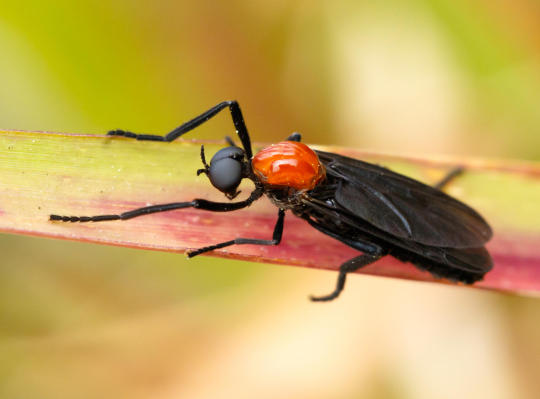
Lovebug (Plecia nearctica)
Distribution: Native to Central America and the Southeastern USA (Alabama, Florida, Georgia, Louisiana, Mississippi, South Carolina and Texas). Most common in Texas and Louisiana.
Habitat: Can be found in almost all habitats, but most common in grassy areas; most common around fresh-cut lawns, animal pastures and areas with decaying vegetation. Found at altitudes of over 450 metres.
Diet: Larvae feed on decaying vegetation; adults feed on the nectar of plants such as sweet clover, goldenrod and Brazilian pepper.
Description: This insect is called the lovebug because mated pairs often stay together for days at a time during and after mating, with flights of mating lovebugs sometimes numbering into the millions. These flights can be quite a nuisance to drivers, as they easily splatter onto windshields and hoods at highway speeds. The acidic body chemistry of dead bugs, left for even just a handful of hours, makes them incredibly difficult to scrape off car parts; what's more, they also have a tendency to cause pits in automotive paint when left untouched for too long, or can cause radiators to overheat. Because they're attracted to fresh paint, lovebug corpses are also a common sight in the dried paint on buildings.
There is many myths surrounding lovebugs, perhaps due to how common they are. One myth claims that these insects were genetically engineered by the University of Florida in order to control mosquito populations (disregarding the fact that they're herbivorous, and thus would make poor pest control!). Another myth claims that lovebugs escaped from the University of Florida after being transported there by scientists; while their original range includes only Louisiana and Mississippi, populations naturally spread north- and southward. For some reason, this insect has many University of Florida-related conspiracies!
Images by Judy Gallagher and Chris Rorabaugh.
85 notes
·
View notes
Text

my friend's Jade plant got sucked on by little white guys
4K notes
·
View notes
Text
February 13th, 2024
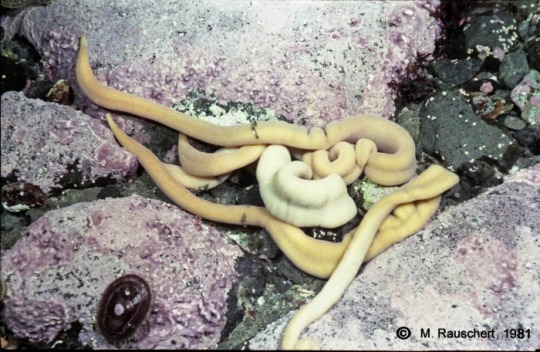
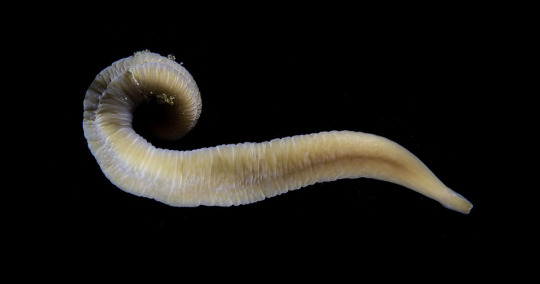
Antarctic Nemertean Worm (Parborlasia corrugatus)
Distribution: Widely distributed in the cold southern seas surrounding Antarctica, as far north as Peru.
Habitat: Epibenthic and marine; found in intertidal zones down to depths of 3590 metres.
Diet: Scavenger and predator; feeds on detritus diatoms, gastropods, amphipods, isopods, vertebrate carrion, sponges, jellyfish, seastars, molluscs, anemones and polychaete worms.
Description: P. corrugatus is a huge ribbonworm that can grow up to 2 metres in length. Like all ribbonworms, this species does not have a dedicated respiratory system, instead breathing through its skin; animals who breathe this way are typically quite small so the oxygen can reach every part of their body, which makes this worm's size even more impressive. Luckily, the Southern ocean is oxygen-rich, and the ribbonworm has a slow metabolism that uses up little oxygen. When it starts to lack oxygen, it flattens itself out to maximize oxygen diffusion throughout its body.
Despite its size, P. corrugatus still has predators. In order to defend itself, it has a proboscis it can deploy in moments, covered in barbs and adhesives (which it also uses to hunt its prey!). If this isn't enough to dissuade predators, it also has an acidic mucus with a pH of 3.5.
Images by Martin Rauschert and Jackson Chu.
15 notes
·
View notes
Text
the polydesmidan millipede family Paradoxosomatidae is highly diverse in Southeast Asia, and here’s a bunch I saw last year. these first two are from Sarawak, Malaysia, and I have no idea what they are.

many paradoxosomatids are arboreal and some even diurnal, despite belonging to an order that lacks eyes entirely. they can march around with little fear though because like many millipedes, they’re full of foul-tasting toxins that most predators can’t tolerate. they advertise this with bright colors and rippling leg displays, as seen in the video.
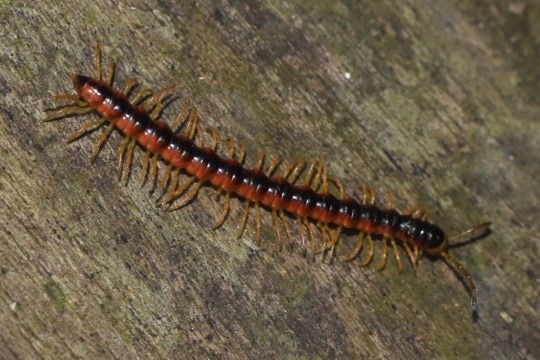
the rest are from Singapore; this one is also unidentified.

an Orthomorpha murphyi pair with a little pyrgodesmid passing by.

Opisthodolichopus scandens is nicely marked with pink.

Anoplodesmus sassurei is a very common species in Singapore, and seems to emerge in large numbers on sidewalks after a good rain.
1K notes
·
View notes
Text
February 12th, 2024


Giant Whip Scorpion (Mastigoproctus giganteus)
Distribution: Found in the southwestern United States, including New Mexico, Arizona, Oklahoma and Texas, down through much of Mexico, as well as Florida.
Habitat: Found in arid habitats; deserts, scrub forests and grasslands, where they take shelter beneath plant debris, in rock crevices or in abandoned animal burrows. Can be found living at altitudes of up to 6000 metres.
Diet: Carnivorous; feeds on a variety of invertebrates, including cockroaches, crickets, millipedes, other arachnids, worms and slugs. Has also been documented feeding on small toads and frogs.
Description: Though their name would suggest otherwise, giant whip scorpions are more closely related to spiders than they are to true scorpions. This species is also referred to as the giant vinegaroon, as it has the capacity to spray a substance containing high concentrations of acetic acid, the same acid found in vinegar. They're able to spray up to 19 times in a row before their pygidial gland is depleted (though it fills up pretty fast; they're usually ready to go again the very next day!). This spray does not usually cause long-term harm, but can occasionally cause the skin to blister, as well as intense pain if it gets into the eyes. Luckily, they only spray when touched—as long as you remain at a respectful distance, you'll be okay! They may also deliver a painful bite or pinch with their powerful chelicerae, though they have no venom.
This species is usually considered to be beneficial, as it often hunts other undesirable arthropods, such as scorpions, as well as agricultural pests that may threaten crops. Giant whip scorpions are also fairly common in the exotic pet trade, as they're non-venomous and have a long lifespan; males can live to 10 years, and females, twice that long!
Images by Bryan Maltais and Diego Barrales.
114 notes
·
View notes
Text
February 11th, 2024

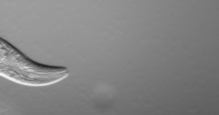
The Worm (Caenorhabiditis elegans)
Distribution: Found in temperate regions worldwide.
Habitat: Terrestrial; lives in humid soils with moderate oxygen contents and low-to-medium clay contents.
Diet: Microbivorous; feed on bacteria that lives in soil and on rotting vegetation, but can also feed on various species of yeast.
Description: C. elegans is aptly nicknamed "the worm" because it is a very common laboratory model; in fact, it's used as the model organism for all eukaryotic organisms! These worms are very easy to study due to the transparency of their body, as well as their limited number of cells, having only 131 cells in their entire bodies. They were the first multicellular organisms to have their entire genome sequenced (as they only have 6 chromosomes and approximately 20,000 genes). Common research on these worms include the processes of embryogenesis, development, disease and aging (especially in the form of programmed cell death). By understanding how their genes are involved in the aging process, we can hopefully have a better idea of the processes involved in human aging, too!
Most of these worms are self-fertilizing hermaphrodites, though males are also present (composing only about 1/1000 worms). Though their anatomy is quite simple, they do possess a simple brain and nervous system (one third of their cells are neurons). They're also capable of rudimentary learning, as well as using chemoreceptors to orient themselves, and respond minimally to light (living in dark environments, they don't have much need for good eyesight).
Image by K. Bradnam and gif by Bob Goldstein.
34 notes
·
View notes
Text
February 9th, 2024


Painted Grasshopper (Poekilocerus pictus)
Distribution: Found in India, Pakistan, Afghanistan, Nepal, Bangladesh, Sri Lanka, Bhutan and the Maldives.
Habitat: Show a preference for dry regions.
Diet: Adults and nymphs most often feed on milkweeds of the genus Calotropis, especially C. gigantea and C. procera. In absence of their preferred food sources, they will feed on a wide range of other plants, including agricultural crops such as wheat, papaya, citrus, castor, eggplant and mango. They will occasionally resort to cannibalism if they're starving.
Description: The painted grasshopper's most well-known trait is their toxicity, which stems from their diet of toxic milkweed sap, the toxins in which are classified as cardiac glycosides and have historically been used in the creation of poison arrows. Nymphs in particular also have the ability to spray noxious liquid when they're grabbed, to a distance of up to 30 centimetres; when any pressure is put on their head of abdomen, a jet of the viscous, milky liquid is aimed towards the sources of the pressure, with both an unpleasant smell and taste as well as a dose of cardiac glycosides. Adults can also discharge this liquid, though instead of emitting a jet, it comes out as a viscous foam leaking out of the sides of their bodies.
This species is often kept as a laboratory animal in India, as they serve as a great model for the observation of spermatogenesis through meiosis. Their cells also contain a chromosomal repair mechanism that counteracts the effects of mutagens during meiosis, prompting research on the enzymes and mechanisms involved in this process.
Images by Haneesh K.M. (adult) and Rohitansh Upadhyay (nymph).
19 notes
·
View notes
Text
February 8th, 2024

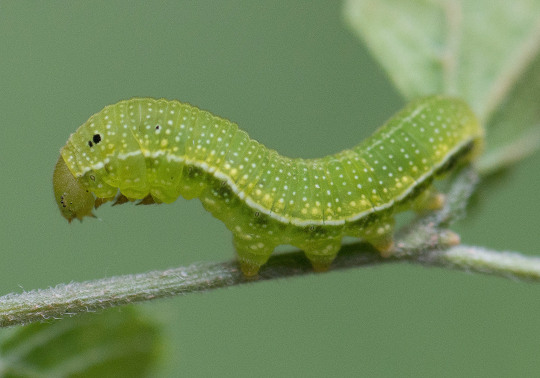
American Snout Butterfly (Libytheana carinenta)
Distribution: Found from Argentina to the southern USA, including Mexico and the West Indies. Migrates to the eastern USA, as far north as the Great Lakes region, as well as to central California, southern Nevada and Colorado.
Habitat: Usually found in forest clearings and edges, brushy fields, thorn scrub and roadsides.
Diet: Adults feed on nectar; common hosts include dogbane, aster, dogwood, goldenrod, sweet pepperbrush, etc, with a preference for white or yellow flowers. Larvae feed on the young foliage of hackberry trees, especially the common hackberry tree.
Description: The American snout butterfly's nose is actually its mouthparts, called labial palps. These elongated mouthparts are used in camouflage, as the butterfly will rest with its head pointed downwards, its snout imitating the petiole of a dead leaf.
These butterflies are migratory. Their native range includes the majority of South and Central America, as well as the southern USA; they travel northwards, sometimes in such large numbers that they darken the sky. These migrations are thought to be triggered by droughts, which pose dangers for the butterflies in the form of parasitoids and limited food sources. Inversely, the presence of heavy rain usually prompts a large amount of egg-laying, causing populations explosions.
Images by Sara Bright.
17 notes
·
View notes
Text
February 7th, 2024
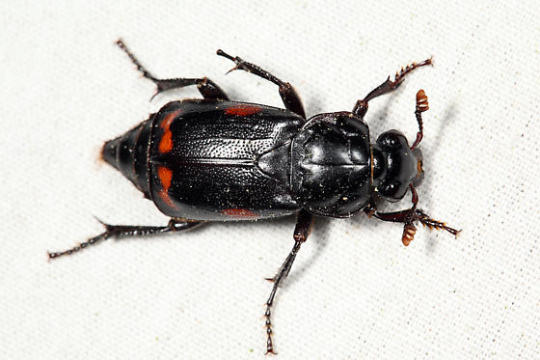

Pustulated Carrion Beetle (Nicrophorus pustulatus)
Distribution: Found throughout North America, east of the Rockies; found as far north as Alberta, and south to Texas and central Florida.
Habitat: Usually found in and around the nests of black rat snakes, but also on the carcasses of small animals, like mice or birds, and in the nests of other Nicrophorus beetles.
Diet: Feed on black snake eggs (and possibly on the eggs of other reptiles and avians), and occasionally on carrion. When given the option, prefer black snake eggs above any other offered food.
Description: The pustulated carrion beetle is the only Nicrophorus beetle known to rear its larvae on alternative food resources to carrion; in this case, snake eggs. They're also unique in the fact that they're one of the few beetle genera to exhibit parental care. When a mating pair of beetles find a suitable food source, such as snake eggs, they will open a small hole to sample the egg's contents, before laying their own eggs in the surrounding soil. Once hatched, the larvae instinctively seek out the eggs, crawling inside thanks to the holes made by the parents. If the parents misjudge the amount of food available, they will cannibalize a portion of their larvae so the rest have better odds of growing up healthy and strong. Throughout the development of their larvae, the parents actively protect them from other predators.
While these beetles have only been observed feeding on black snake eggs in the wild, they have been shown to feed on the eggs of turtles in the laboratory, which implies that they may feed on many species. They have also been observed in trees, potentially in search of abandoned bird eggs; they have however not been proven to feed on bird eggs as of yet.
Images by Tom Murray and Kyran Leeker.
Here's a very interesting article about the unique behaviour of these beetles, and how they differ from others in their genus!
6 notes
·
View notes
Text
February 6th, 2024


St. Andrew's Cotton Stainer (Dysdercus andreae)
Distribution: Found on islands of the Caribbean basin and of the Lesser Antilles, as well as in the Florida Keys.
Habitat: Usually found where one of its hosts appears, such as cotton plants or Portia trees. Usually live in tropical areas around coastal woodlands and cotton plantations.
Diet: Mainly feed on the seeds of host plants, but will occasionally feed on unripened fruit.
Description: St. Andrew's Cotton Stainer is named so for two reasons, the first being the white "X" present on its back, resembling the cross on the Scottish flag. Its feeding habits tend to leave yellow-brown stains on cotton bolls, which cannot be washed out and thus affects the quality of the cotton, thus the nickname "cotton stainer".
Cotton stainers as a whole are considered fairly important pests of cotton plantations, both for their staining habits but also because their presence can limit the growth of cotton bolls, reducing yield during harvest, but also because they damage fruit.
Images by Carlos De Soto Molinari and David Griswold.
7 notes
·
View notes
Text
February 5th, 2024

Satan Tarantula (Psalmopoeus satanas)
Distribution: Found throughout the localities of La Magdalena, Reserva Otongachi and Los Bancos, in the provinces of Santo Domingo de los Tsáchilas and Pichincha, Ecuador.
Habitat: Lives on the northern and central-western slopes of the Cordillera Occidental of the Andes mountains, at altitudes of 866 to 937 metres. Found in low-mountain and mountainous evergreen forests. Can be assumed to be arboreal, like other species of its genus.
Diet: Probably feed on similar prey to other tarantulas, such as large insects and other arthropods.
Description: The Satan tarantula was discovered very recently, having been initially discovered in 2021 and published in December 2023. Its unofficial common name stems from the behaviour of the captured male specimen, who was particularly feisty; upon being spotted, it immediately demonstrated defensive behaviours, before fleeing. The research team became quite fond of the tarantula, despite its "bad temperament and sporadic attacks".
Along with P. chronoarachne, which was discovered in the same area by the same team of researchers, the Satan tarantula's habitat is fragmented by agricultural land and mining operations, both legal and illegal. Their habitat does not include any protected areas, unfortunately, and as of their discovery, both species are already considered critically endangered.
Images by Pedro Peñaherrera-R. and Roberto J. León-E.
Here's an interesting article about the discovery of these two species :)
37 notes
·
View notes
Text

someone made this for me on Twitter a few years ago and I still think about it a lot. I don’t remember who it was but thank you very much
3K notes
·
View notes
Text
February 4th, 2024
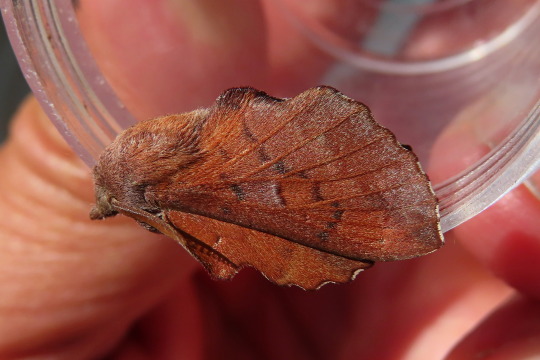

American Lappet Moth (Phyllodesma americana)
Distribution: Found throughout North America, from Nova Scotia to northern Florida in the east and Yukon to Texas in the west.
Habitat: Found in mixed and hardwood forests where at least one of their hosts occurs.
Diet: Larvae feed on the leaves of alder, birch, oak, poplar and willow trees, as well as tobacco brush, golden chinquapin and plants of the rosoideae family. Adults do not feed, but still retain their vestigial mouthparts.
Description: American lappet moths are best known for their unique appearance, imitating a dead leaf, which allows them to camouflage themselves within dry foliage. The term "lappet moth" refers to the tufts of fur and skin present on the caterpillars' prolegs, giving them the appearance of lappets.
This species is quite common throughout their distribution, though they are not known to cause any significant harm.
Images by Bob Jacobson and Yurika Alexander.
4 notes
·
View notes
